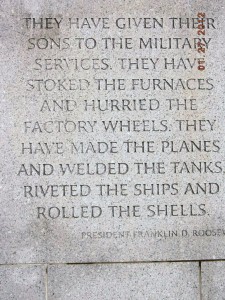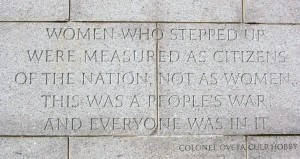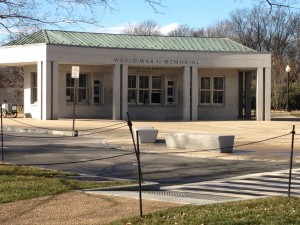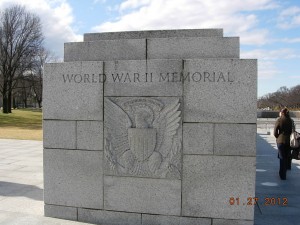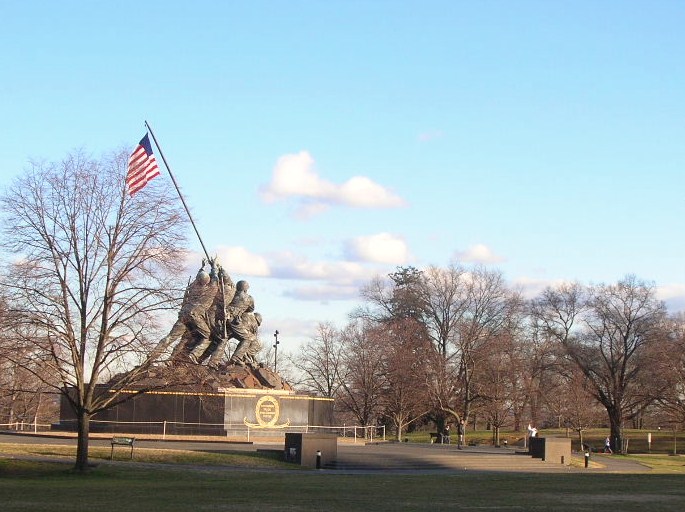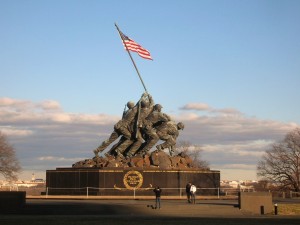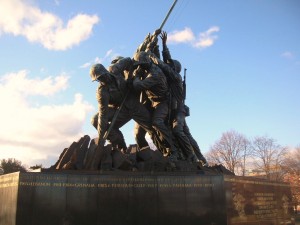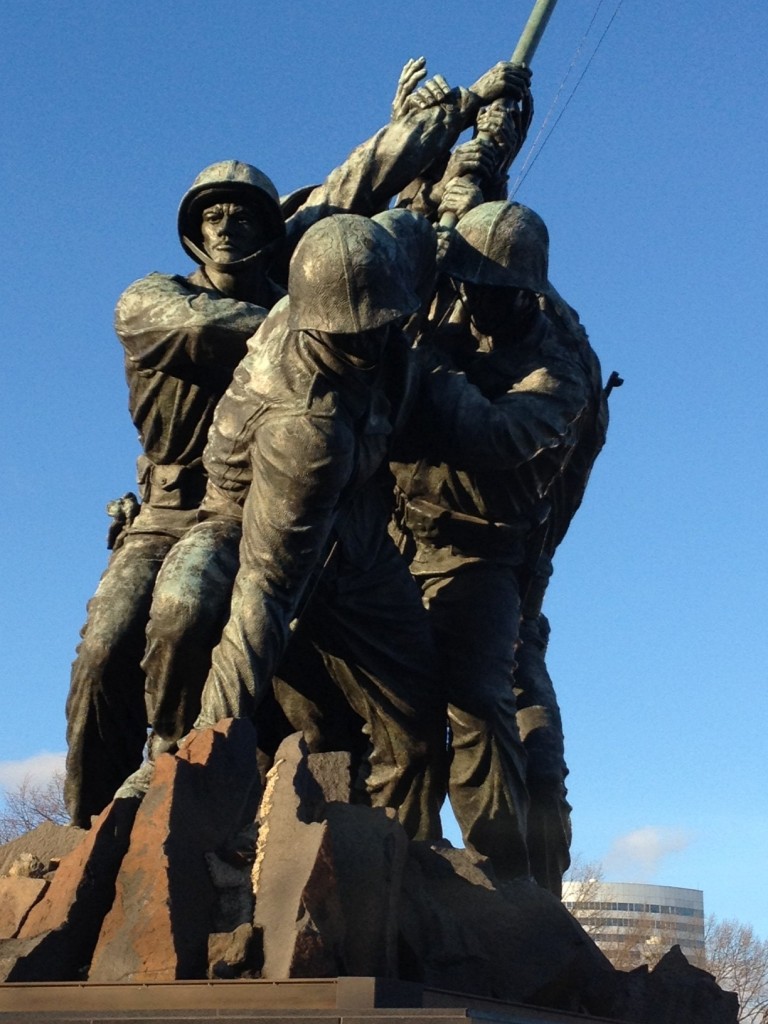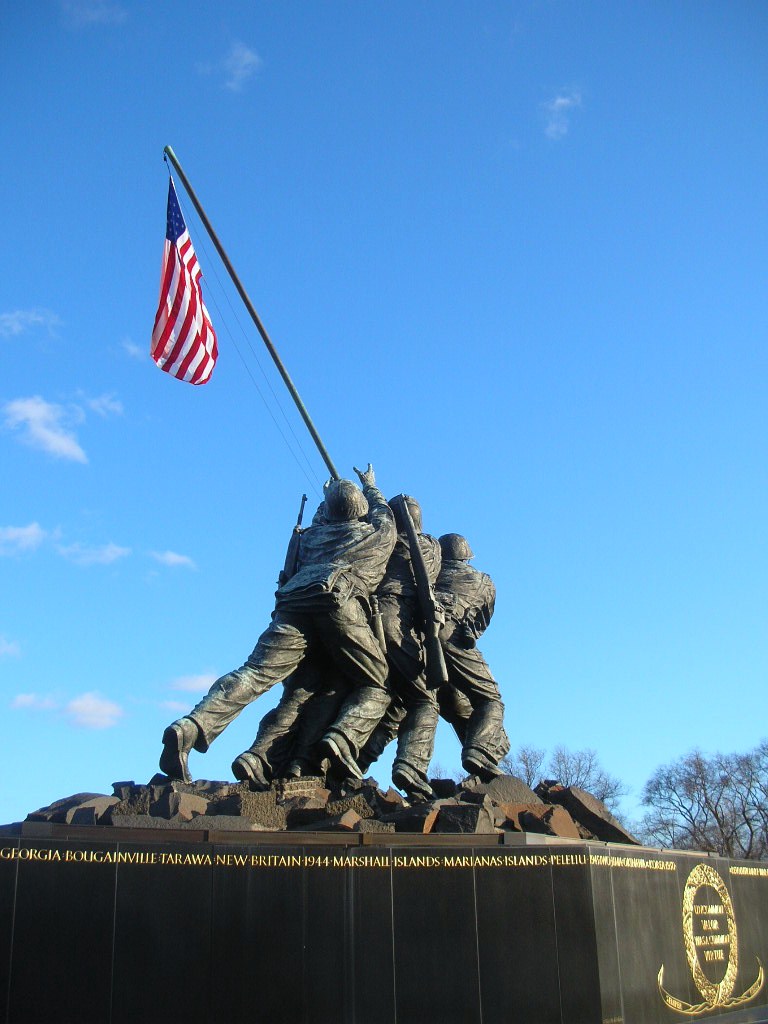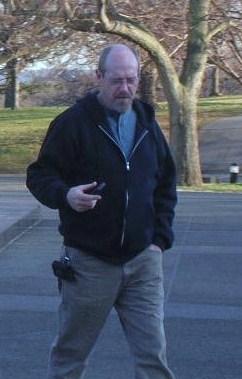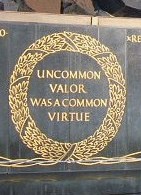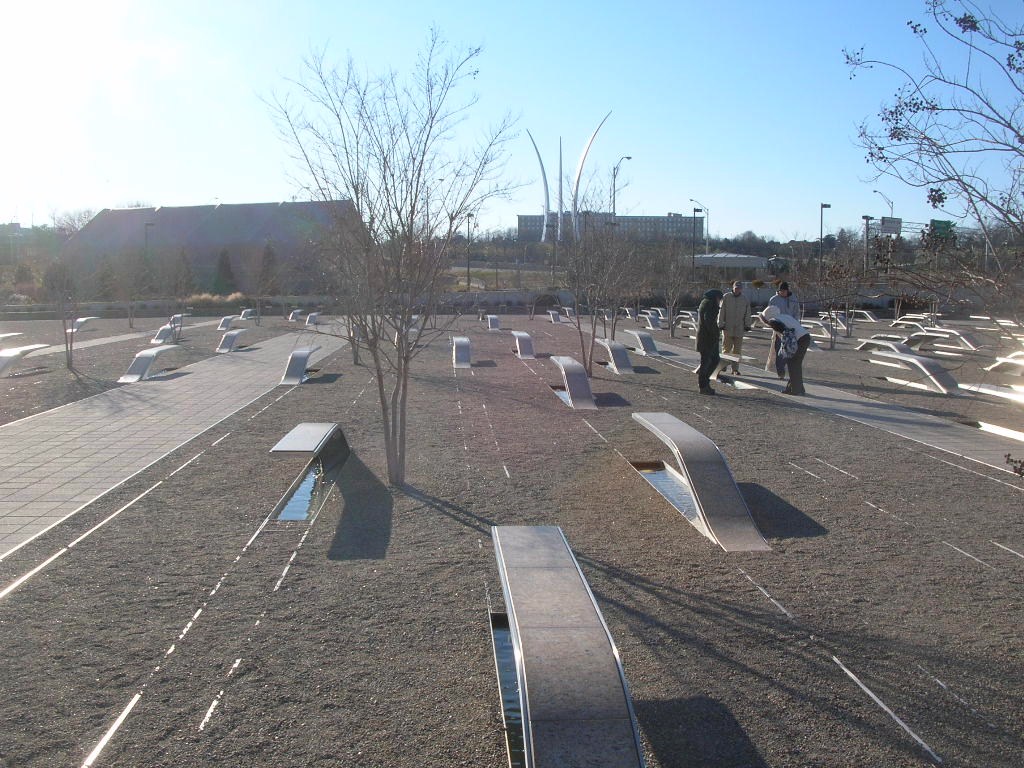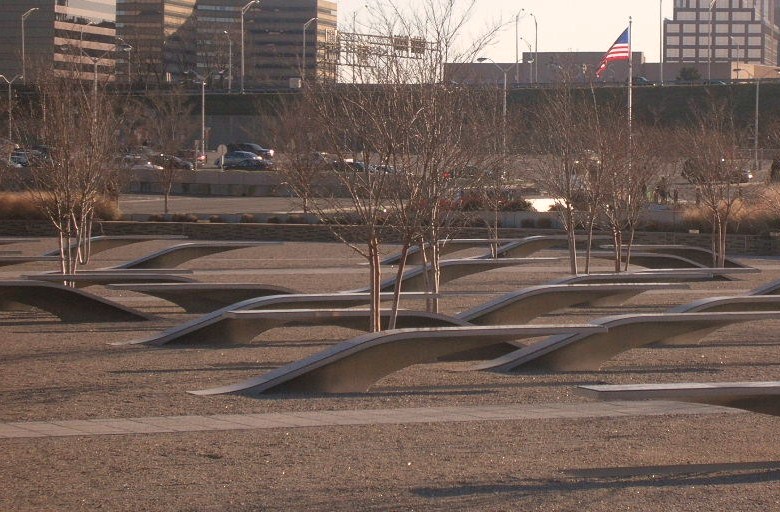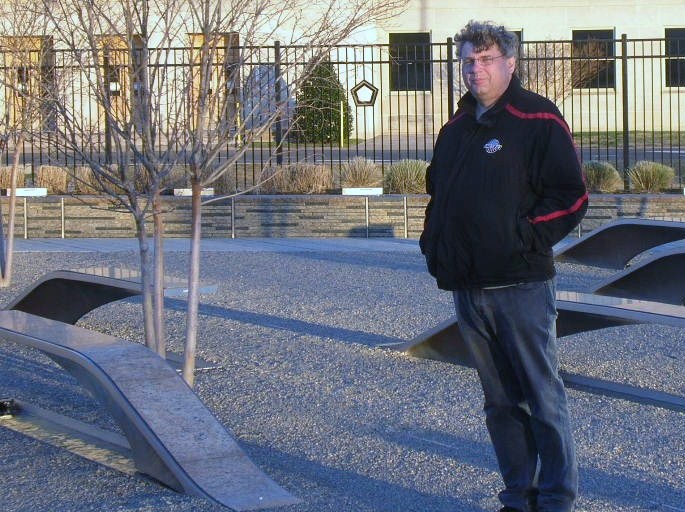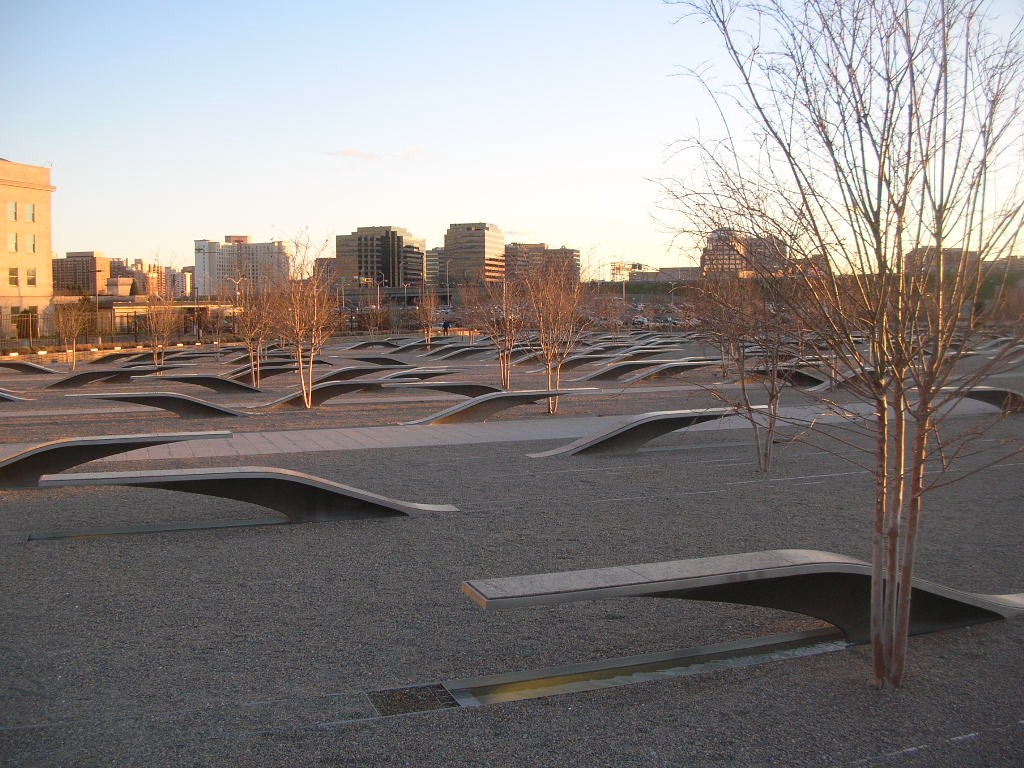From the Declaration monument, we made our way to one of the newer and more well-known memorials, the World War II Memorial. It is both striking in its design (even with the water drained for the cold weather as it is now) and awe-inspiring in its sobriety. It is also very popular at all times of year.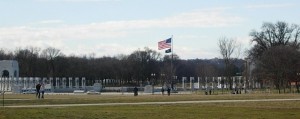
The World War II Memorial honors the service of sixteen million members of the Armed Forces of the United States of America, the support of countless millions on the home front, and the ultimate sacrifice of 405,399 Americans. On May 29, 2004, a four-day “grand reunion” of veterans on the National Mall culminated in the dedication of this tribute to the legacy of “The Greatest Generation.” See more at the official website.
It is situated between the Washington and Lincoln adjacent to the Reflecting Pool. 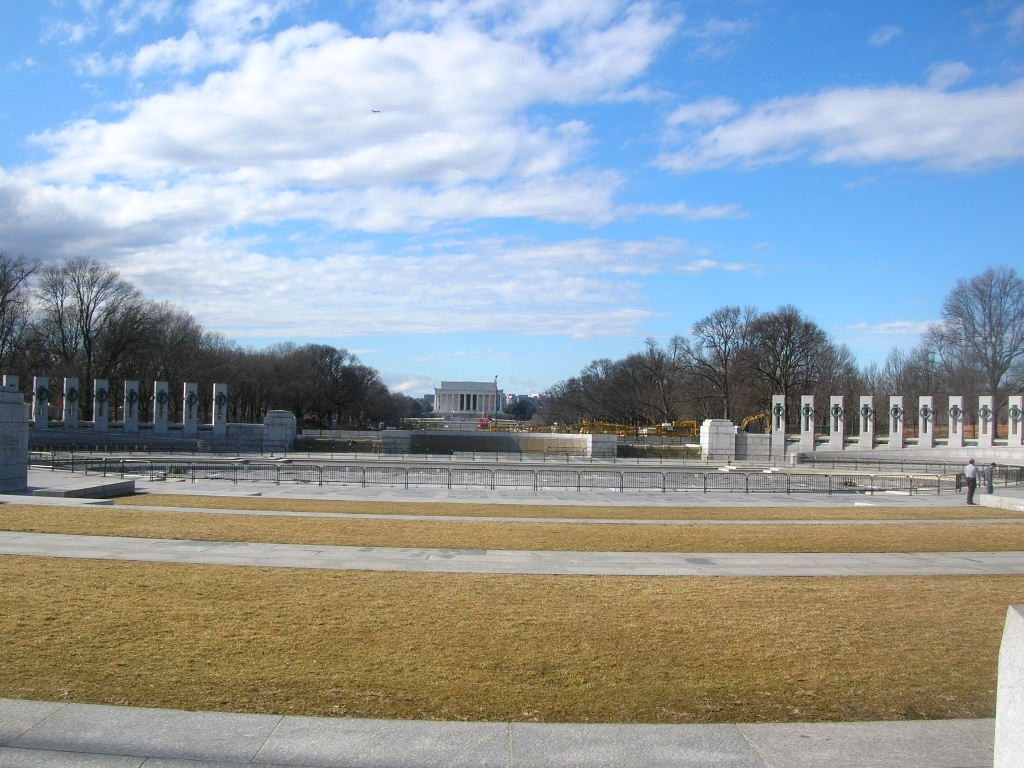 This was the first time that Steve and Russ had been to see it.
This was the first time that Steve and Russ had been to see it.
The Memorial includes granite columns for each of the states, districts and territories that sent their sons and daughters to fight.
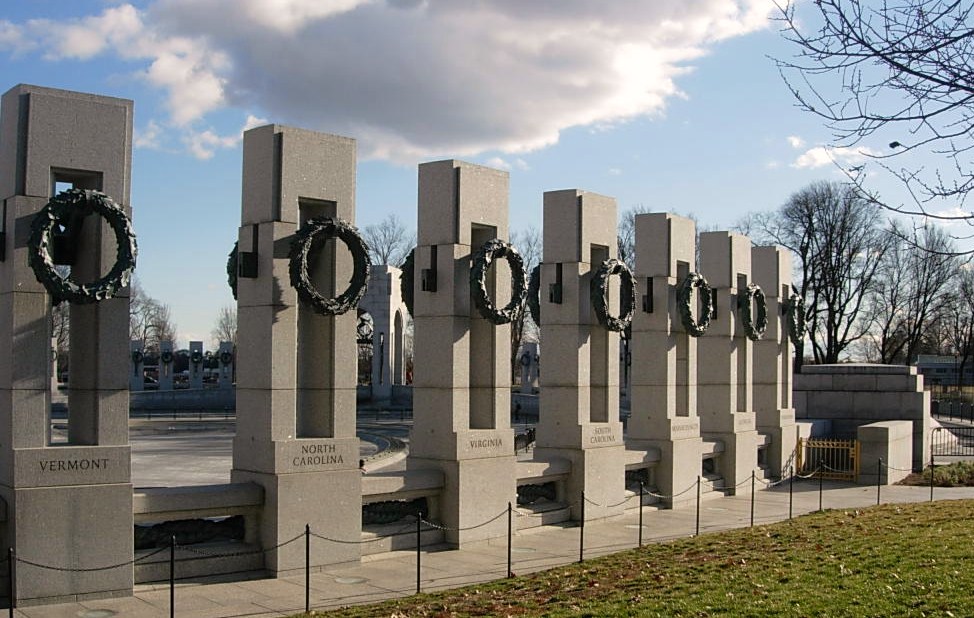
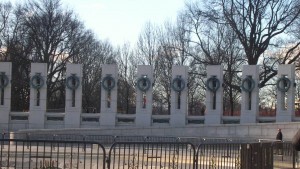 Connecting the granite columns are bronze ropes just as the country was bound together in a common purpose. (More than a few lament the passing of these binds while rejoicing that their cause has ended.)
Connecting the granite columns are bronze ropes just as the country was bound together in a common purpose. (More than a few lament the passing of these binds while rejoicing that their cause has ended.)
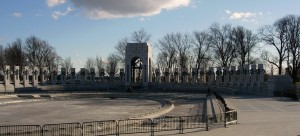 At opposite ends of the circle are soaring pavilions to signify the two major fronts of the war, the Atlantic (sea, land and air) and the Pacific (sea, land and air).
At opposite ends of the circle are soaring pavilions to signify the two major fronts of the war, the Atlantic (sea, land and air) and the Pacific (sea, land and air).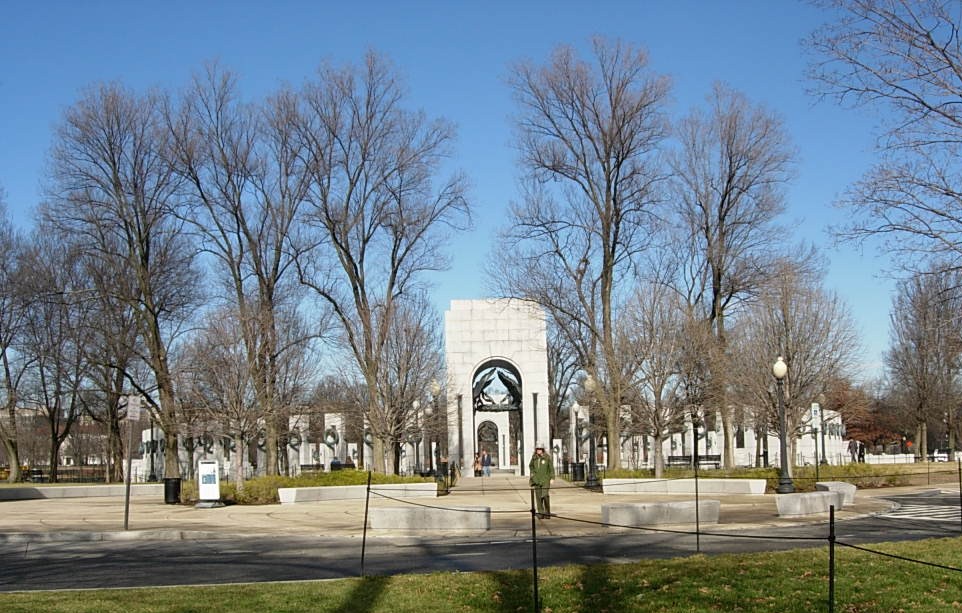 In the center of the circle are pools of water (during normally warmer months). At various spots are bronze bas-reliefs and engraved granite recalling significant events or thoughts of the period.
In the center of the circle are pools of water (during normally warmer months). At various spots are bronze bas-reliefs and engraved granite recalling significant events or thoughts of the period.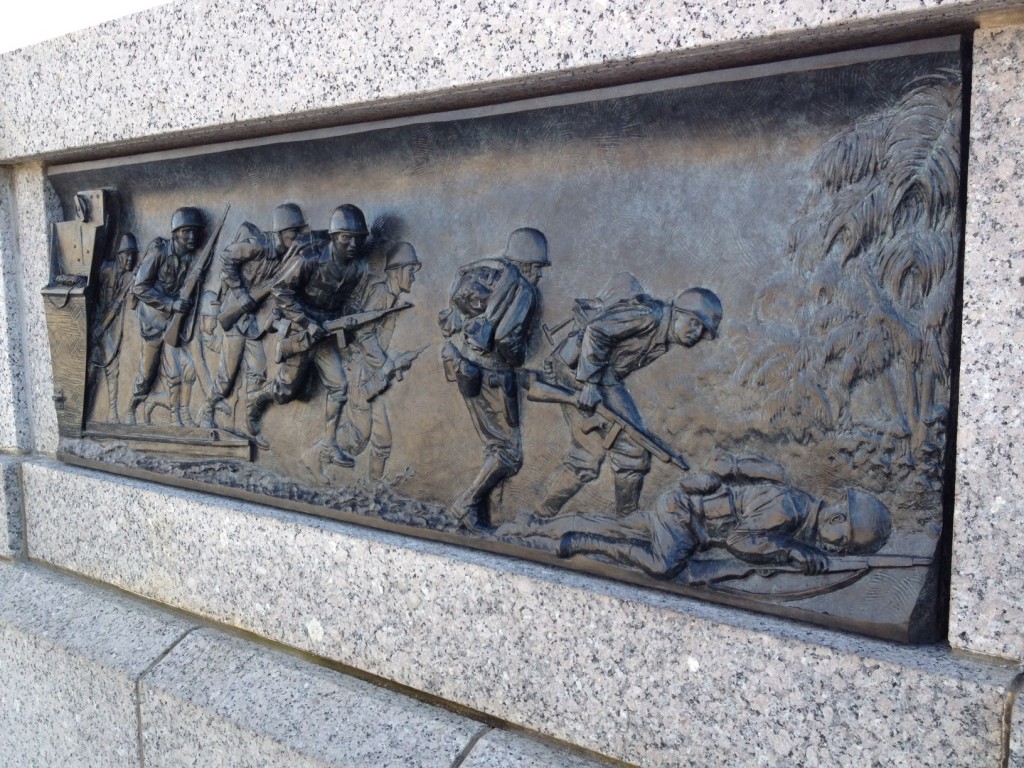 One of my favorite parts of this Memorial is the wall of over 4,000 gold stars commemorating those who were casualties or missing after the war. (We didn’t get a picture of them.)
One of my favorite parts of this Memorial is the wall of over 4,000 gold stars commemorating those who were casualties or missing after the war. (We didn’t get a picture of them.)
Our next stop was the Korean War Veterans Memorial, located southeast of the Lincoln 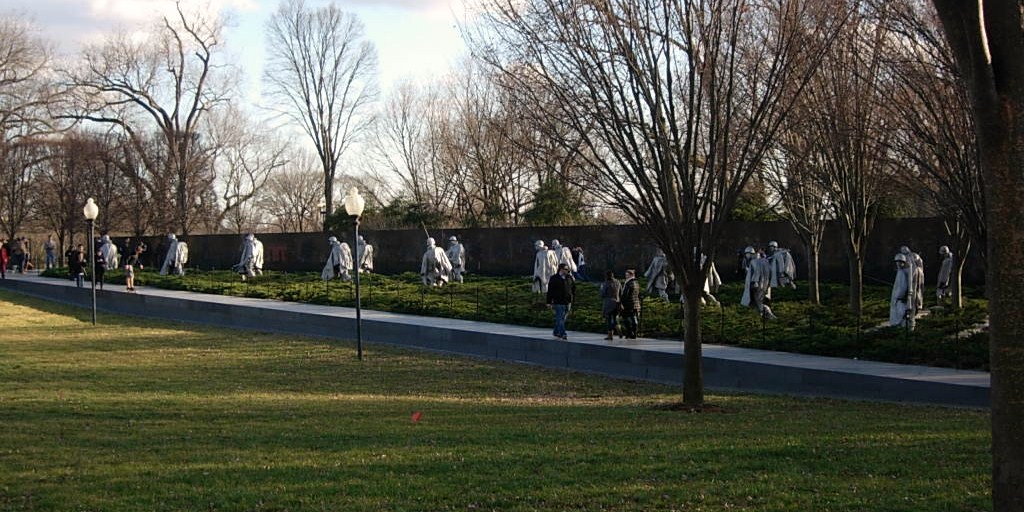 Memorial on the National Mall. The Memorial commemorates the many who died (USA 54,246 United Nations 628,833), went missing (USA 8,177 UN 470,267), captured (USA 7,140 UN 92,970), and wounded (USA 103,284 UN 1,064,453) for a country of people they never knew.
Memorial on the National Mall. The Memorial commemorates the many who died (USA 54,246 United Nations 628,833), went missing (USA 8,177 UN 470,267), captured (USA 7,140 UN 92,970), and wounded (USA 103,284 UN 1,064,453) for a country of people they never knew.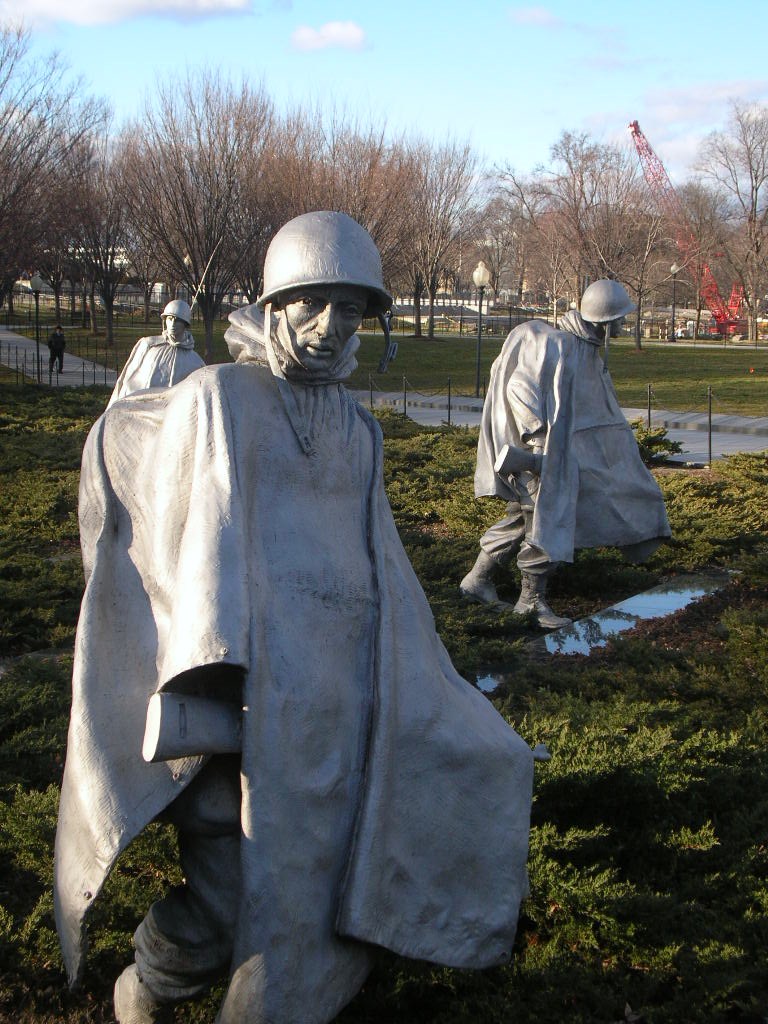
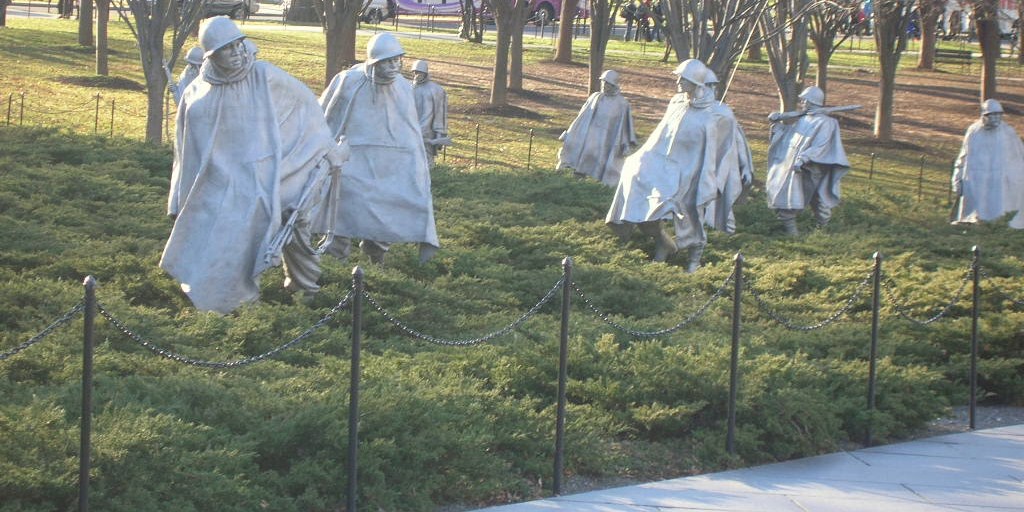
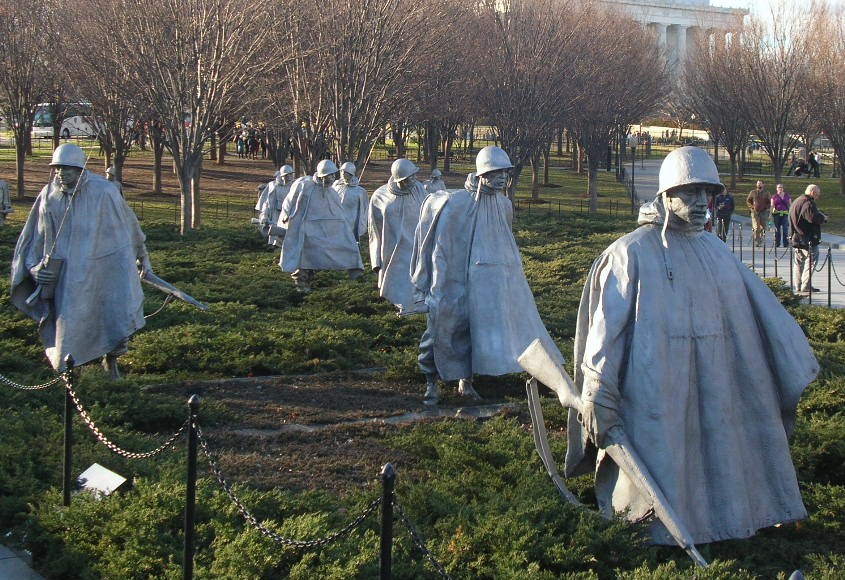
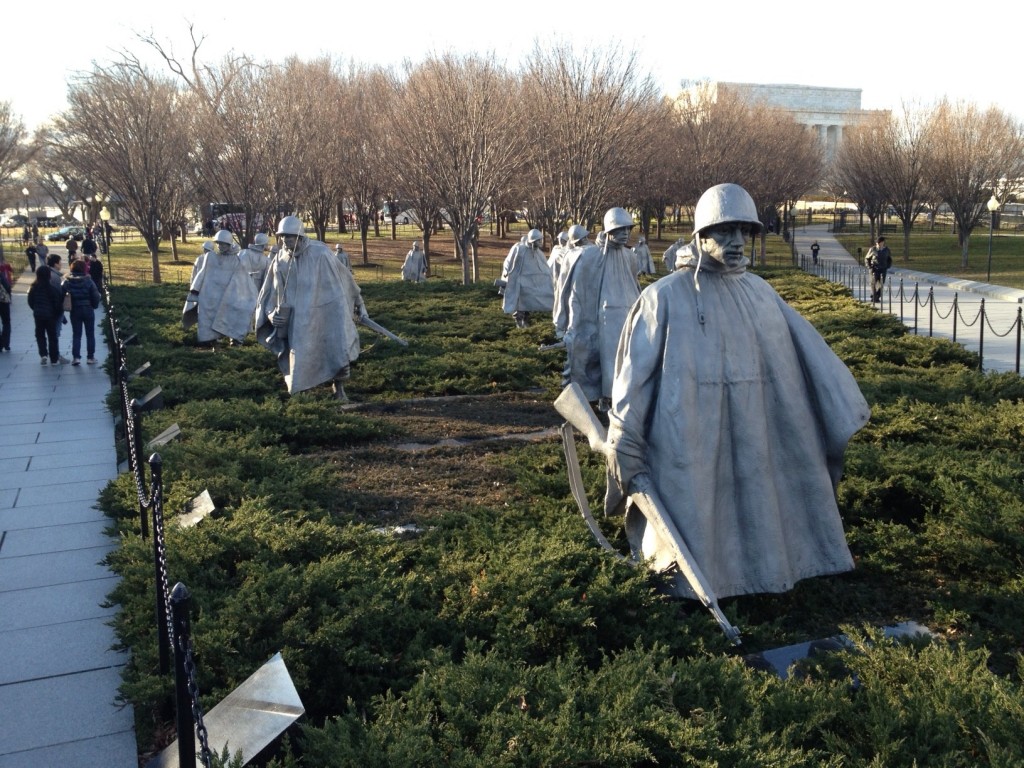 The Memorial contains 19 larger-than-life figures are made from stainless steel and are depicted marching next to a wall of polished granite where a multitude of faces look on. There is something haunting in the sculpture as well as the faces etched and reflections.
The Memorial contains 19 larger-than-life figures are made from stainless steel and are depicted marching next to a wall of polished granite where a multitude of faces look on. There is something haunting in the sculpture as well as the faces etched and reflections. 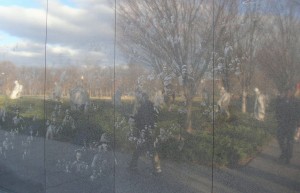
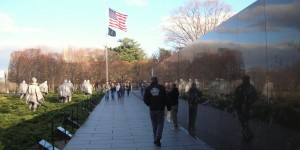
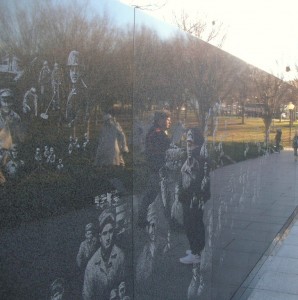
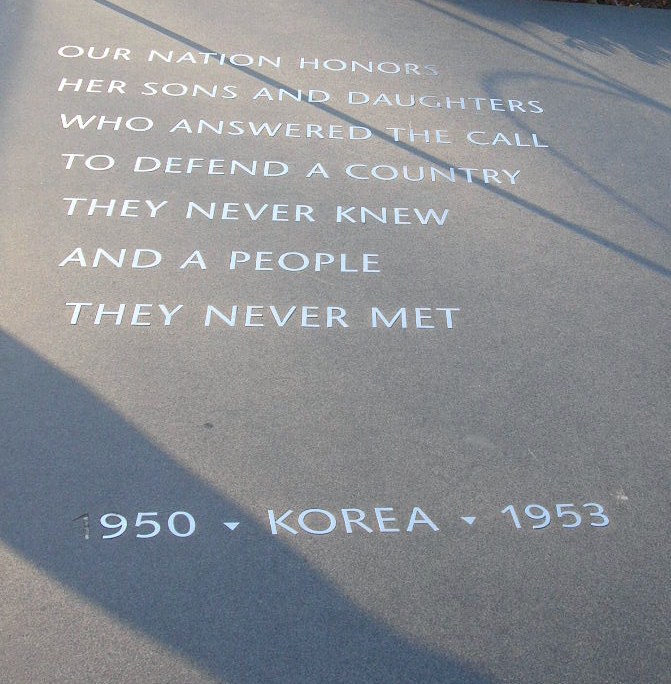 The visit to the Korean Veterans Memorial was a first for the guys.
The visit to the Korean Veterans Memorial was a first for the guys.
Our next stop was the Iwo Jima Memorial.
“The United States Marine Corps War Memorial stands as a symbol of this grateful nation’s esteem for the honored dead of the U.S. Marine Corps. While the statue depicts one of the most famous incidents of World War II, the memorial is dedicated to all Marines who have given their lives in the defense of the United States since 1775. ” You can read more about the Memorial at the official website.
The Pentagon September 11 Memorial opened on September 11, 2008 to honor the memory of the 184 people who died in the attack there on September 11, 2001 both on the ground and onboard the airplane. 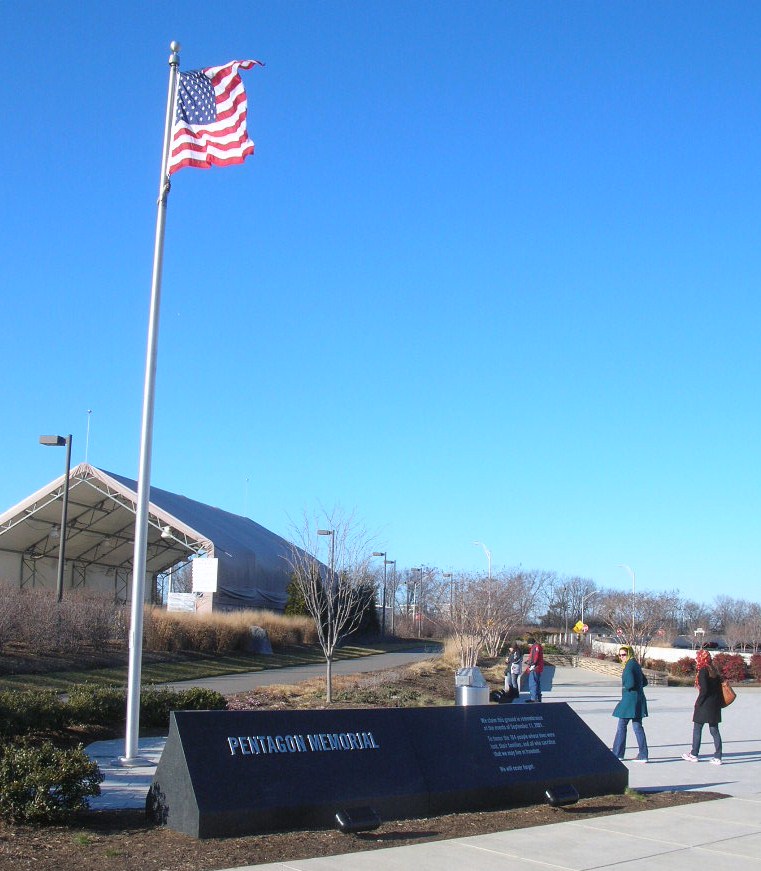
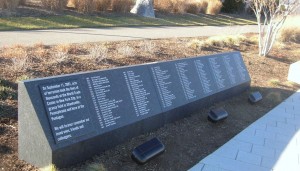 The Memorial is located on the rounds of the Pentagon complex and not easily reached. The options include taking the Yellow or Blue Line Metro to Pentagon Station and then walking around to the opposite side of the complex or driving and parking on the opposite side of I-395 (although 5 handicap parking spaces are available next to the Memorial). There is also a walking tunnel under 395 from near the Pentagon City Mall. I believe that there is also a drop off for tour buses
The Memorial is located on the rounds of the Pentagon complex and not easily reached. The options include taking the Yellow or Blue Line Metro to Pentagon Station and then walking around to the opposite side of the complex or driving and parking on the opposite side of I-395 (although 5 handicap parking spaces are available next to the Memorial). There is also a walking tunnel under 395 from near the Pentagon City Mall. I believe that there is also a drop off for tour buses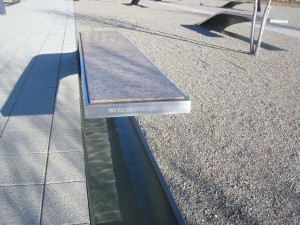 nearby so the “difficulty” and long walk is only if you’re traveling on your own.
nearby so the “difficulty” and long walk is only if you’re traveling on your own.
For each person who died there, there is a bench rising from the ground on one end and suspended in the air on the other. Below each bench is a pool of moving water. On the end of the bench, the name of the person is engraved. You can tell whether the person was inside the Pentagon or onboard the airplane from which end of the bench with their name is anchored in the earth and which end is 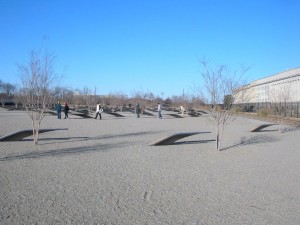 elevated. If the anchored end is closer to the building, they were inside the Pentagon. If the anchored end is away from the building, they were onboard the airplane.
elevated. If the anchored end is closer to the building, they were inside the Pentagon. If the anchored end is away from the building, they were onboard the airplane.
The benches are arranged based on the year of birth of the person. The younger children onboard the airplane are closer to the entrance. Thankfully, there are also fewer of them in that area. If more than one member of a family died during the attack, family names are listed in the reflecting pool under the bench, in addition to the separate benches that have been created for each individual. A wall along the edge of the Memorial begins at a height of 3 inches and rises to a height of 71 inches, the ages of the youngest and oldest victim of the attack, and approximately 85 paperbark maple trees are planted on the memorial grounds.

